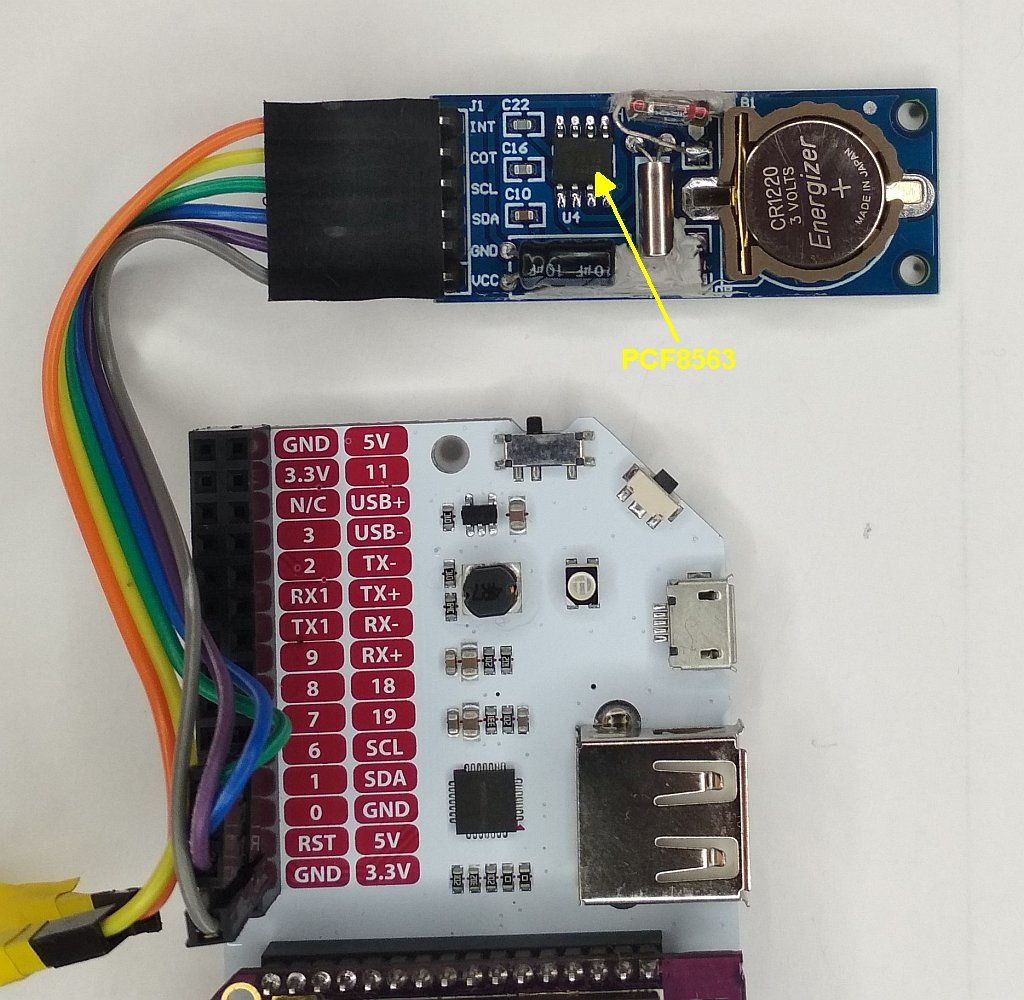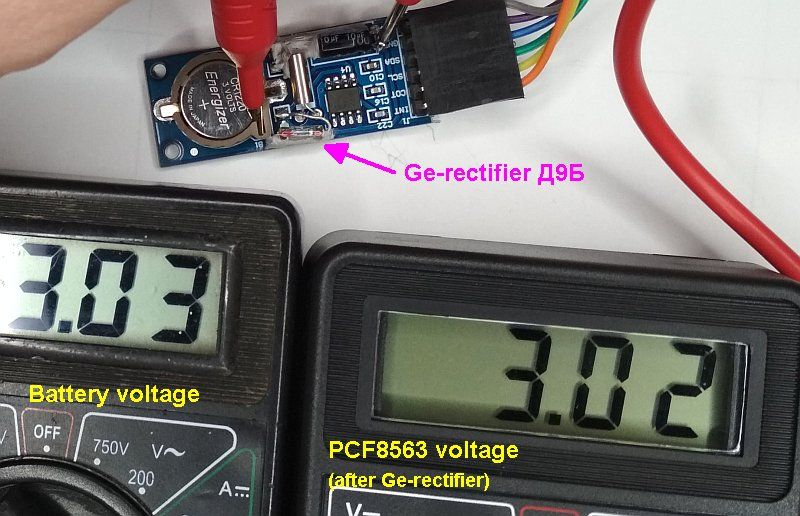Project "liburtc" the library to operate external RTC devices
-
Hi all. As you know the Omegas don't have any internal Real Time Clock (RTC) device. Without Internet connection after startup you can see 1970 year. Many devices don't need Internet, but most of them need correctly clock and calendar i.e. it can be SQL server. Software clock is not convenient.
To connect external RTC you have to install special driver (kernel module), but it may not be compatibly with Omega's OS or you can catch fatal error on loading. Kernel models are very difficult things for us (simple users). Look at below of my external RTC device PCF8563.

Fortunately, you can fix it without kernel module - user-space driver will be enough. I make it and named as
liburtc. Follow the project in my repository.The project consists with liburtc.so library (shared object) and
urtcdateutility. The library provide API for your own application and also tourtcdatetoo. Urtcdate works similar withdateutility in a Linux. After installationurtcdateutility it set self-running into the file/usr/sbin/ntpd-hotplugand will run after every NTP-client synchronizations including on startup. If you haven't Internet connection and incorrect Software clock, utility will correct it from external RTC device.This project out of official application repository, but you can install it manually, see this below:
wget https://bitbucket.org/hlorka/liburtc/downloads/liburtc_1.0-1_mipsel_24kc.ipk wget https://bitbucket.org/hlorka/liburtc/downloads/urtcdate_1.0-1_mipsel_24kc.ipk opkg install ./liburtc_1.0-1_mipsel_24kc.ipk ./urtcdate_1.0-1_mipsel_24kc.ipkVersion 1.0 now supports only one RTC chip PCF8563, but you can append another to the library sources or contact me to get help. Everyone can join to the project and make your own pull-requests (Git).
How to optimize using battery power
As you see my external RTC-module was upgrade. To use Battery power more effective I recommend change Silicon rectifier (1N4148) to a Ge-rectifier with less forward drop voltage. I'm using old Russian diodes Д9[Б|Д|Е] they have very low forward voltage and they widely distributed in The Russian Federation, Belarus Republic, Ukraine, etc.
In the photo below you can see Voltage measurement before and after this rectifier.

-
Very cool!
-
@Modest-Polykarpovich Great information to know, thank you for posting!
Not sure where I would buy old Russian diodes here on Australia though

-
@crispyoz said in Project "liburtc" the library to operate external RTC devices:
Not sure where I would buy old Russian diodes here on Australia though

You can try 1N34A that's Germanium Diode too and say us result.